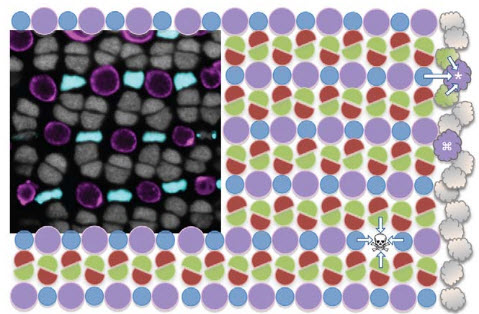Could stem cells repair damaged cones in retinas, allowing for daylight color vision?
February 4, 2013

Zebrafish cone photoreceptor mosaic (credit: Brittany Fraser et al./PLOS ONE
University of Alberta (UA) researchers have discovered that a zebrafish’s stem cells can selectively regenerate its damaged photoreceptor cells.
UA lead researcher Ted Allison says that for some time geneticists have known that stem cells in zebrafish can replace damaged vision cells.
Rods and cones are the most important photoreceptors. In humans, rods provide us with night vision while cones give us full-color daytime vision.
What was not known, says Allison, was whether zebrafish stem cells could be instructed to only replace the cones in its retina. This could have important implications for human eyesight.
“This is the first time in an animal research model that stem cells have only repaired damaged cones,” said Allison. “For people with damaged eyesight repairing the cone retinal cells are most important because they would restore day-time color vision.
The researchers say that to date, almost all success in regenerating photoreceptor cells has been limited to rods, not cones. Most of these previous experiments were conducted on nocturnal rodents, animals that require good night vision, so they have far more rods than cones.
The findings shows some hope for stem cell therapy that could regenerate damaged cones in people, especially in the cone-rich regions of the retina, the researchers say.
Allison says the next step for his team is to identify the particular gene in zebrafish gene that activates repair of damaged cones.
The research was led by U of A Biological Sciences researcher Ted Allison.The research was funded by the Natural Sciences and Engineering Council of Canada (NSERC).